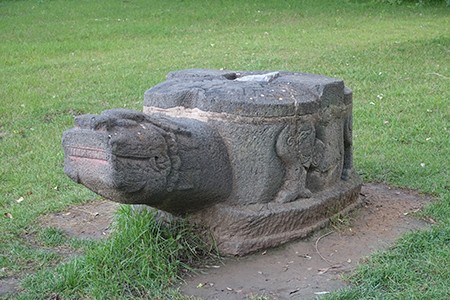Why so many buildings look like so many other buildings is a recurrent question in the study of Chinese architecture. Stated another way, how is it possible that a civilization as philosophically, militarily, bureaucratically, and technologically sophisticated as premodern China maintained a building system with so little diversity through millennia? Bracket sets evolve and regional styles can be identified, yet from the second millennium BCE up to the twentieth century CE the overwhelming majority of Chinese buildings were elevated on platforms and supported by wooden frames and had bracket sets and ceramic tile roofs. This simple, timber-frame building was modular; its size could be changed through increase or decrease in number of pillars; and its function could be altered by replacing a throne with an altar without moving most of the wooden components. Construction had no role for architects, only for craftsmen who followed prescribed ratios and proportions. The building of interlocking wooden parts could be a palace; ritual hall; Buddhist, Daoist, or Confucian temple; mosque; or garden pavilion. It could be copied ad infinitum in brick or stone or metal.
The implementation of the Chinese building tradition in Japan and Korea is well documented. Diaries, travel accounts, and court records confirm that Buddhist monks and emissaries brought Chinese construction to both countries. “The Borders of Chinese Architecture” explores buildings farther from China than Korea or Japan for which the records of borrowing are scarce and surviving architecture and excavated evidence are the primary documentation.
The Balhae and Jurchen, or Jin, empires (698–926 and 1115–1234, respectively) are two of the sources for this investigation. Although they are separated by 189 years, the juxtaposition is logical. Both are included in the historical narratives of China, Korea, Mongolia, and Russia, in all of which present-day countries their territories lie. Balhae and Jin bookend the Liao dynasty (907–1125), which absorbed Balhae and was conquered by Jin. Both polities and Liao had a five-capital governing system. Both engaged in war and diplomacy with China.
The study of Balhae and Jin architecture even now is guided by events of war and diplomacy. Although monographs about Balhae and Jin civilization have been written in Chinese, Korean, Japanese, and Russian, no scholar has studied the physical remains of either empire across its expanse. Nor has even one book utilized the extent of multinational scholarly research available. This study began with on-site investigation in each part of the Balhae and Jurchen empires except North Korea. It continued with research in all relevant languages. Excavation records and extensive written sources that have been fundamental to all assessments and conclusions about Balhae and Jin architecture to date will be employed for assessment of other polities covered in a broader investigation of the borders of Chinese architecture that will begin in the third century CE and extend into the twentieth.
This study shows that Balhae’s capitals followed the plan of China’s premier imperial city of the seventh to the ninth century, Chang’an. It demonstrates that the position of palaces in the Tang (618–907) capital was a characteristic shared in all Balhae cities and that the U-shaped palace plan with projecting towers may or may not also have been shared. It further shows that the ground plans of Balhae’s Buddhist buildings reflect both Tang China’s most complicated Buddha hall with two concentric rings of columns and simple buildings with just perimeter pillars.
As for Jin, its remains divide into those that were part of the Balhae empire and those in north China. The second body of material is better studied, and one can argue it was part of the Chinese building tradition. New Jin information, from former Balhae territory, has emerged from excavations in eastern Mongolia, northeastern China, and Russia after decades of hiatus following excavations by Japanese archaeologists when this territory formed part of Manchuria. The cities and buildings that have become known recently are smaller, use more stone, and suggest more direct knowledge of Balhae construction than Jin architecture in north-central China. Pottery, roof tiles, animal heads, and belt pieces confirm influence of Balhae on Jin, sometimes without the input of Liao.
The historical and practical circumstances of imitation, borrowing, adoption, or adaptation of Chinese architecture are behind every aspect of this project. The study confronts colonialism in the form of Chinese military commanderies and garrisons and later Japanese occupation; diffusionism with the intention of spreading Chinese civilization beyond China; and the historical memory of people transplanted outside their native land by religion, commerce, or conquest. This book also explores architecture as a primary symbol of national identity, and the unique symbolism of a multimillennial building tradition in the architecture constructed at China’s borders.
